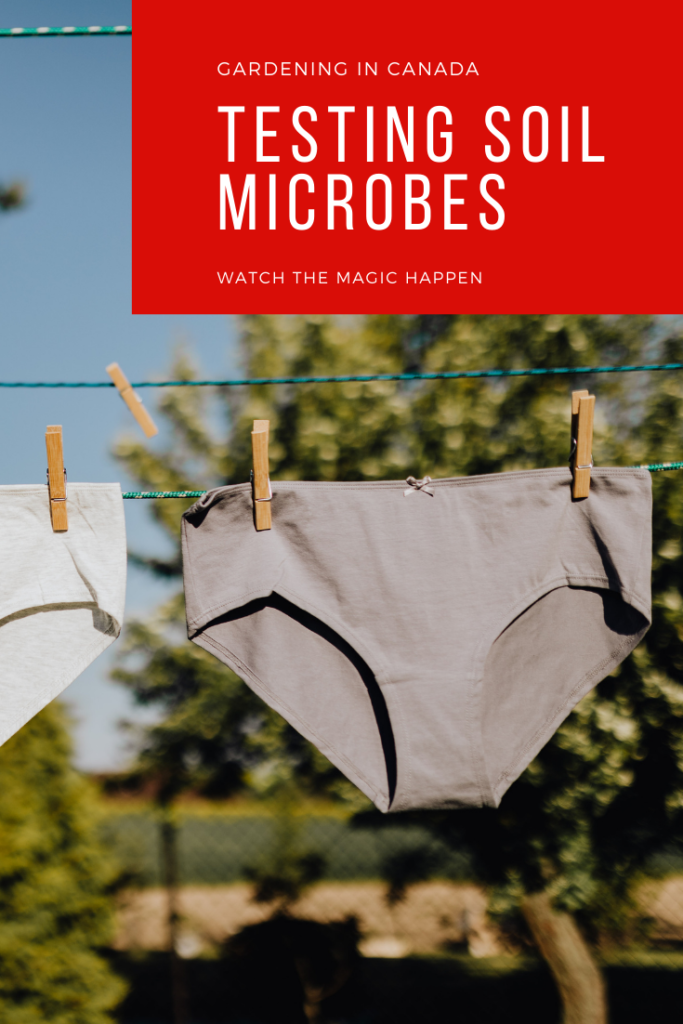- Canada’s Growing Zones Are Changing 2024 - January 12, 2024
- Attracting Wildlife To The Garden - May 16, 2023
- How To Garden Near A Septic Tank - May 9, 2023
With the rise in permaculture and a heavy focus on microbe health, it is important to look at the microbial activity of our soil. However, a professional test is not cheap and involves a trained eye and a microscope.
If you are new to this blog my name is Ashley and I am a soil scientist. I am located in a Canadian Zone 3 and a USDA Zone 4. I write articles, make YouTube videos, Instagram & Facebook posts all designed for Canadians and Cold Climate gardeners using science-based methods. If you are looking for anything specific be sure to let me know in the comments down below.
This next test is the MOST bizarre, but I swear it works… and it involves burying your underwear.
Test Your Garden Soil For Microbes:
- Step 1: Grab a cotton piece of cloth – underwear, a sock, T-shirt anything will work
- Step 2: Get a before the weight of the cloth and record it
- Step 3: Bury it in the soil at approximately plant root depth and mark the area
- Step 4: Let this sit in place for approximately five weeks
- Step 5: Dig up the undies and see how much of the original weight is still there if any
For a number of crucial reasons, including nutrient cycling and disease prevention, garden soil needs microbial activity.
Nutrient Cycling
The cycling of nutrients, such as nitrogen and carbon, which are necessary for plant growth, is mostly regulated by microorganisms in the soil. Microorganisms help plants access minerals like phosphorus and potassium by converting organic matter into forms that plants can utilise.
Suppression of disease
Soil microorganisms compete with harmful microbes for nutrients and space, which helps to suppress plant illnesses. Additionally, certain microbes create substances like antibiotics and others that can stop diseases from proliferating.
Soil Structure
Microorganisms are essential for preserving the fertility and structure of the soil. They aid in agglomerating soil particles, which strengthens the soil’s structure and increases its ability to retain water.
What The Science Says
According to a study that appeared in the journal “Agriculture, Ecosystems and Environment,” microbial activity in soil can greatly enhance plant growth and health. According to the study, compared to plants grown in soils with low microbial activity, those cultivated in soils with high microbial activity had better biomass and nutrient uptake.
Another study indicated that varied microbial communities in the soil can be more efficient at nutrient cycling and disease suppression than less diverse communities. This study was also published in the “Journal of Environmental Quality.”
References:
- Agriculture, Ecosystems and Environment, “Microbial diversity in soil and its relationship to ecosystem services”
- Journal of Environmental Quality, “Soil microbial diversity and ecosystem functioning”

